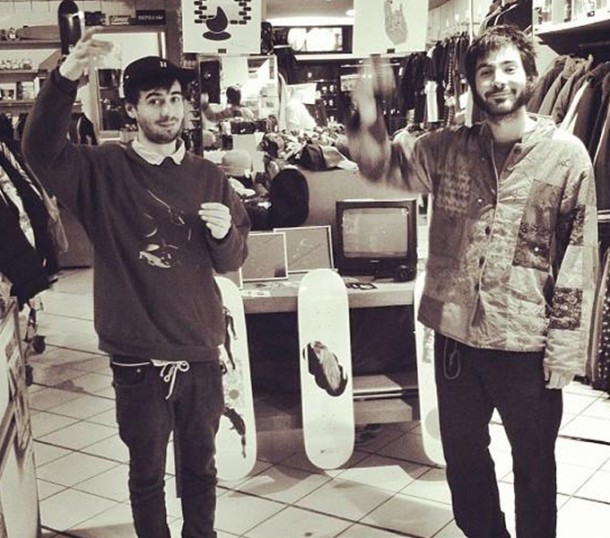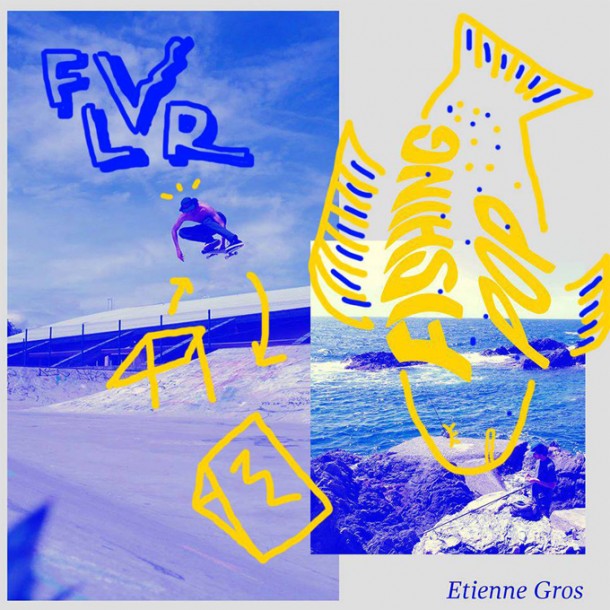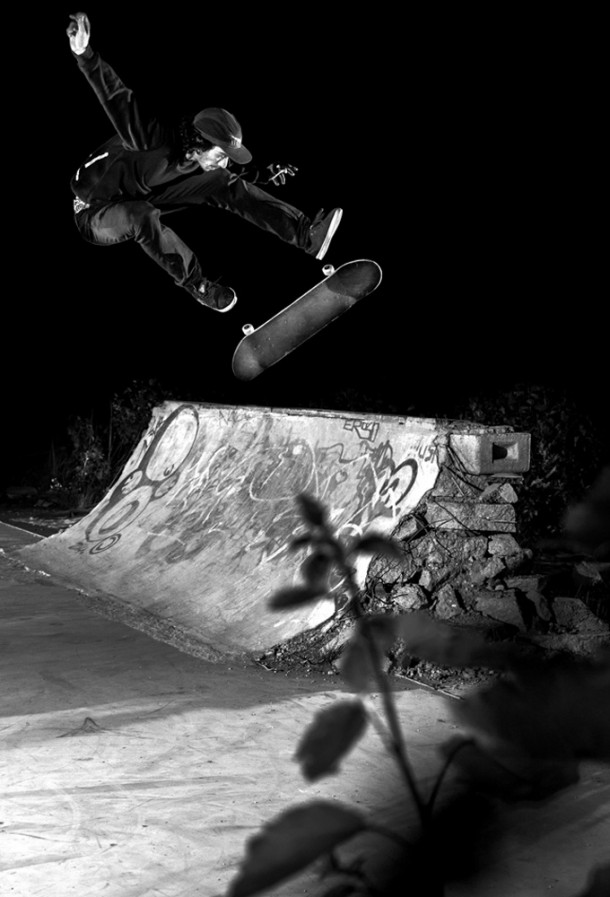Skateboarding and art always made for perfect companions, with the sublime work of artists like Mark McKee, Jim Phillips or Sean Cliver resulting from the mix. Skateboarding itself is often thought of as an art form in it's own right, at least within the community of skateboarders. Still, people that are foreign to skating often are not quite able to understand what we do, leaving skateboarding to the obscure. But how can we reach them? The FLVR collective is trying to solve that puzzle with what they call "sensitive research about skateboarding". Since that sounds a little cryptic at first glance, we talked to Xavier Staal, one of FLVR's founders to give some explanations.

Hey Xavier! In plain terms, what would you say FLVR collective is doing?
Yeah, we're just trying to connect skateboarding with art to create a new approach to both. Basically we produce decks and board–graphics.
Since you are one of the founders: How did the idea come up and who are the people behind FLVR?
The core of FLVR is me, Youri Fernandez and Paul Bizcarguenaga. Paul is an important input for us, but likes to stay on the sidelines. Youri works on the artistic concept and I'm doing the business stuff. Basically we make our decisions together, it's all friendship between us. We started with the thought of creating a skate brand, but not the conventional way. Hence, we decided to focus on graphics, replacing the traditional team of skaters with a team of artists.
 Paul und Youri im Local–Shop
Paul und Youri im Local–Shop
Your latest project is Fougère. What is that about?
Fougère is our new series in collaboration with photographer Clement Chouleur. The project features an interdisciplinary approach, a total mash–up of skateboarding and art. It resulted in expositions in France and Berlin. First there were Clements Photos, then we got some art put together and produced boards, after that we filmed a video–performance, one part being a skate–video. It's all based on Clements input though.
You had a couple of exhibitions going as you just mentioned, how did they work out?
It all worked pretty good. Instead of the regular advertisement stuff we decided to do exhibitions. That gave us the opportunity to first present our stuff better and support the artists, second to interact with our audience in a more complex manner. It's always different to actually share ideas and get some direct feedback.
We saw some work by Mixen from Shrn on your exhibitions, how did you guys connect?
We sent him some of Clement's photos and he reinterpretated them in his way. His illustrations are featured in the book too, you get it with the first 100 Fougère decks. Mixen is one of a total 15 artists that worked on it. Shrn was the first German shop to carry our boards, they were supporting us from the beginning.
You were already talking feedback, how did people receive your work?
We basically only had positive feedback, most people liked what we do. We had a very eclectic audience, not only skaters. A lot of non–skaters and artists, almost all of them liked our stuff, which made us very happy.

So you're trying to reach a broader audience, not just skaters?
Yeah, that's part of the whole idea. We want to reach more people and depict skateboarding in a different way than what the community is used to. Not only trick after trick, but with a focus on aesthetics. Skateboarding is visible everywhere in the streets and we try to pave the way for non–skaters to understand it. They should not only see people doing tricks, but the beauty of architecture being used in ways diverging from what was the architect's intent.
On your website you write you are doing "sensitive research about skateboarding", what does that mean?
We are doing a video and decided to integrate it into a larger concept with different approaches and chapters to make skateboarding understandable. First the ground, then the spots and then we confront the skaters' view with an outside view. When you see the performances within the whole video you can see the skaters interact with the images. Maybe they see a spot and think about what trick they could do there, non–skaters just see the usual bench that everyone sees. After a certain amount of time though, they begin to understand the skateboarders' approach which is an integral part of the concept. We want to create a perspective that sheds light on every aspect of skateboarding, neither only the view us skaters have, nor solely an outside view.
We want to create a perspective that sheds light on every aspect of skateboarding, neither only the view us skaters have, nor solely an outside view.
Is the collective open to everyone? How did you choose the people that worked with you so far?
Mostly we would just meet up with skaters and we become friends and talk about what we can do together. Still though, we also try to invite people from outside skateboarding. Whenever we really like their work, we try to brainstorm possibilities to create something together. It's basically both, a board series and an exhibition concept. We have no limits on how we choose people though, only thing important is that we get to know them personally.
What is FLVR up to in the future? What are you going to do apart from the video and a board series?
We are going to start producing some garments as well, in the same way we produce boards. Collaborating with people and trying to develop concepts surrounding the work. After that we are just trying to produce more boards, do more exhibitions, just keep on doing what we are doing now with new projects all the time.
 Etienne Gros, Artwork by Theo Belot
Etienne Gros, Artwork by Theo Belot
And you are doing all that without an actual team of skaters?
Initially that was what we planned, we did not want to sponsor a conventional team. It's all about treading new paths really. Not putting out logos and pro boards. Still though, we met some super nice people, made friends with many and we'll keep supporting them. Whoever is in our videos or works on our projects is definetely a friend of ours, we might call them up for projects or whatever, but we might as well not. Just fluctuation, redefining what we do with every project. The skaters that ride our boards can ride any board of any brand they want. It's rather just friendship, not a team.
But that means you are flowing some riders, right?
We're making our minds up about that topic right now, because we initially wanted to replace the skate–team with an artist–team. Maybe that was too strict and you could definetely name some skaters that are a part of the collective somehow, but you wont't find them on a website or whatever. It's important that we really know them and that they want to hang with us to work on our projects, but we don't call them a team. We don't have profiles on our website.
Thanks, Xavier!
My pleasure.
 Ètienne Gros – Kickflip to Fakie
Ètienne Gros – Kickflip to Fakie
 Etienne Gros, Artwork by Theo Belot
Etienne Gros, Artwork by Theo Belot